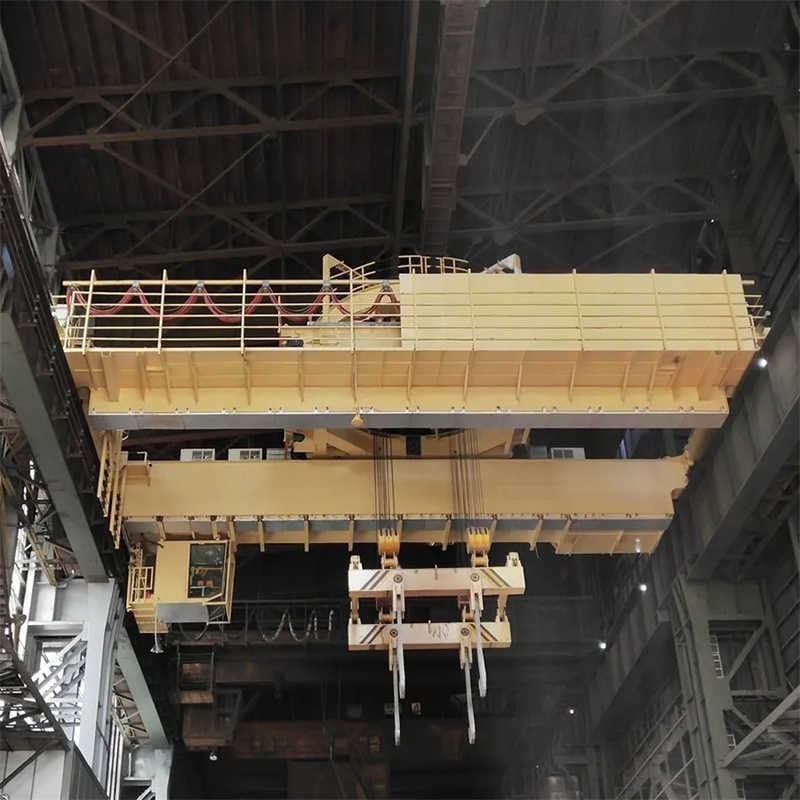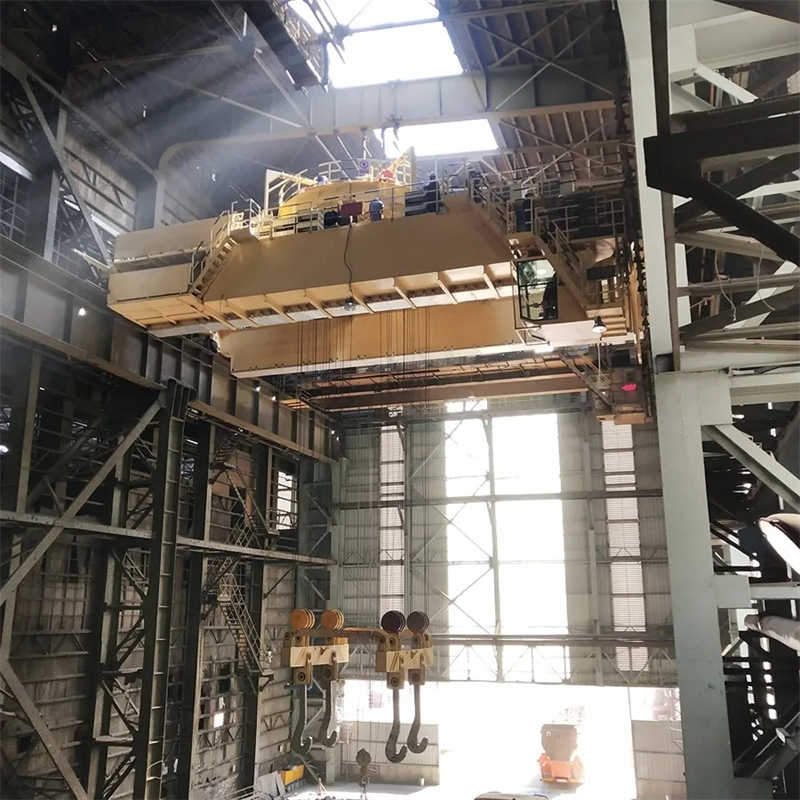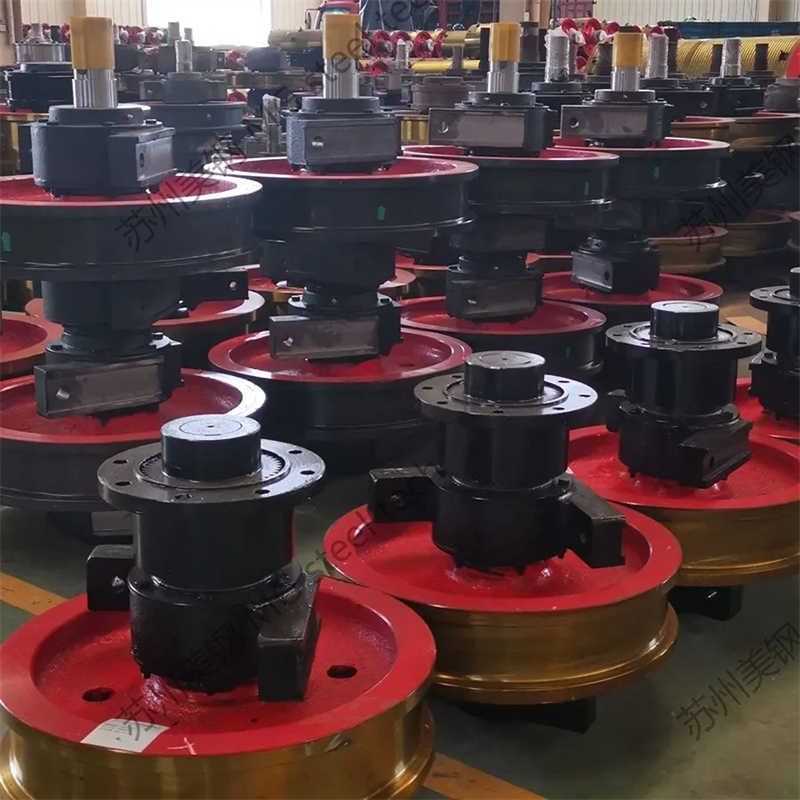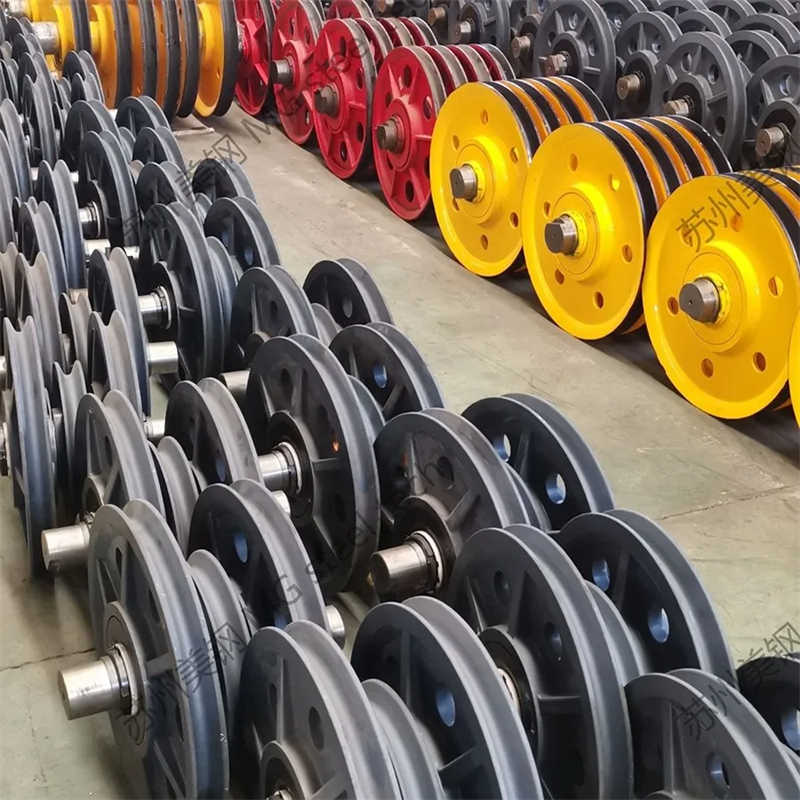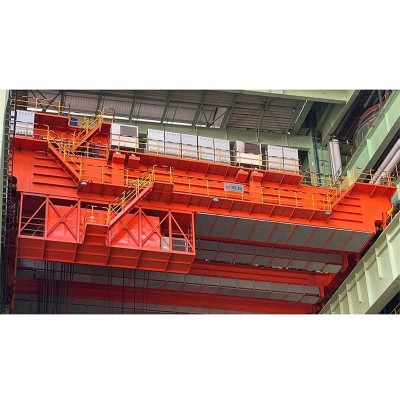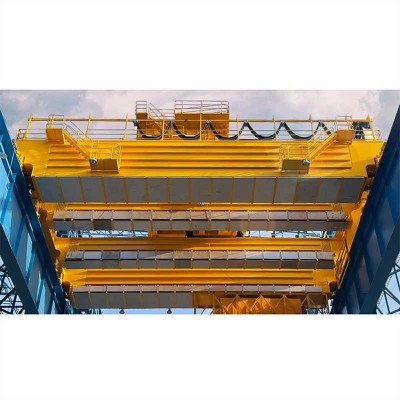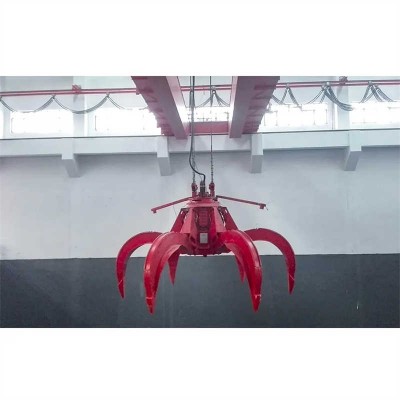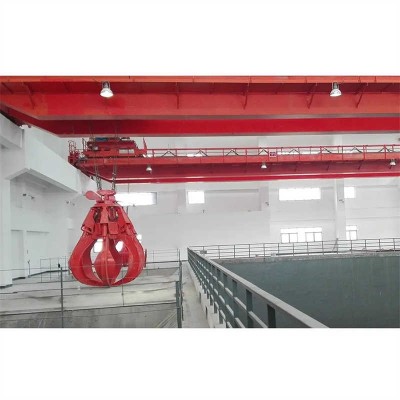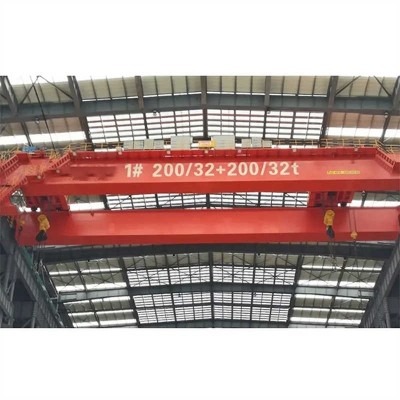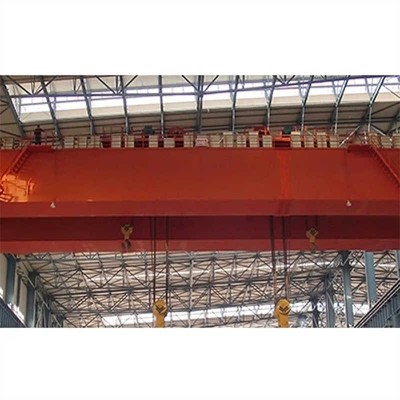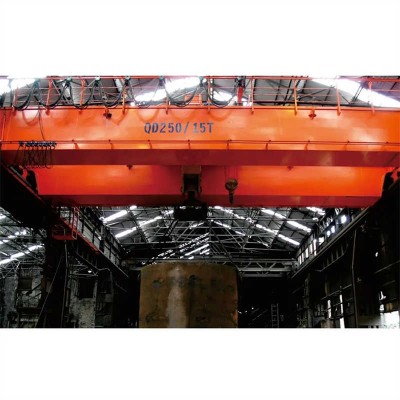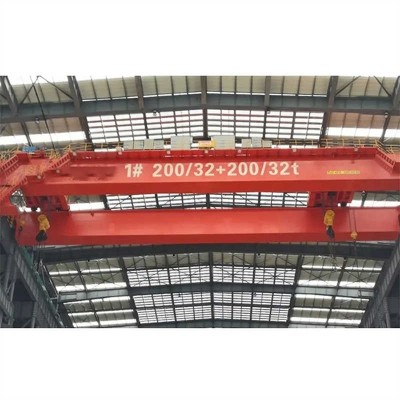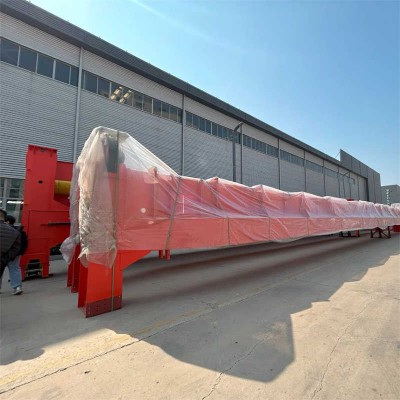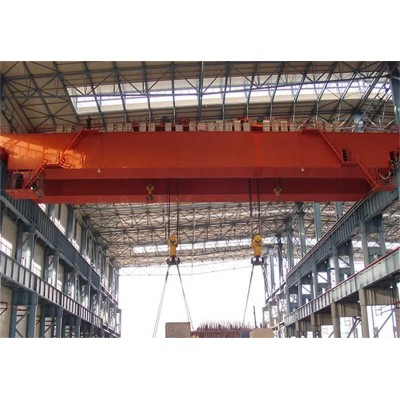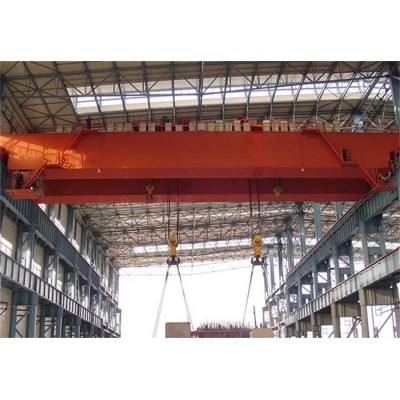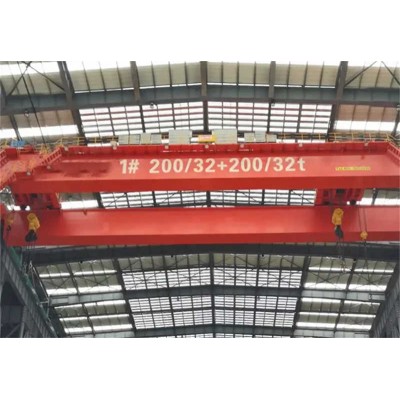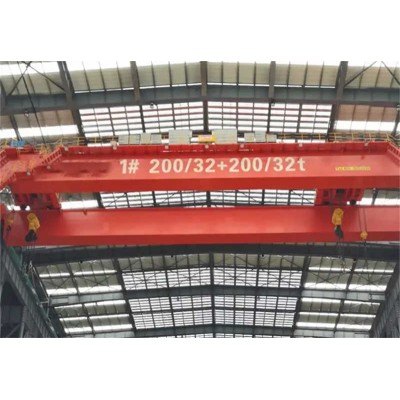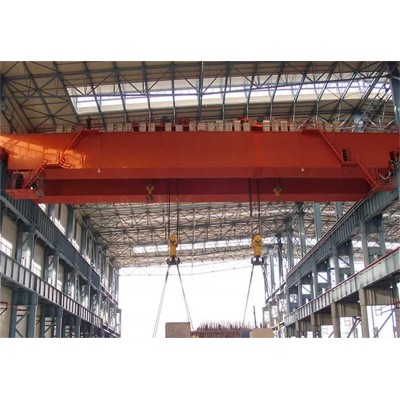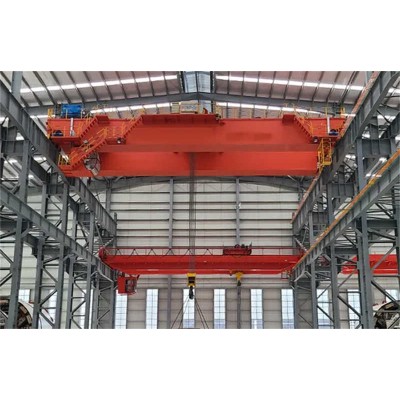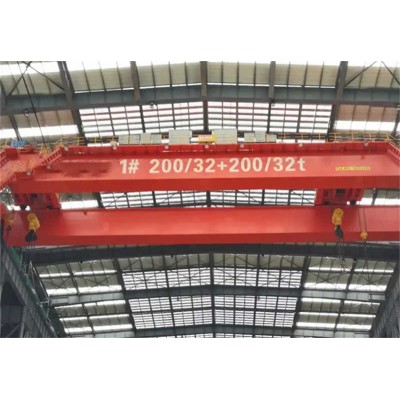Stable Performance Rotation Double Girder Overhead Traveling Crane
$12000.00Product Description

Product Description

INTRODUCTION TO BRIDGE CRANES
Bridge cranes are an important piece of machinery designed for heavy lifting and material handling in a variety of industrial settings. With impressive lifting capacities, this bridge crane is ideal for factories, warehouses, shipping yards, and construction sites. It simplifies operations by facilitating seamless movement of loads, minimizing manual labor, and increasing workplace productivity. In this product description, we will delve into the types, functions features, applications, and benefits of bridge cranes to give you a comprehensive understanding of their benefits.
It simplifies operations by facilitating seamless movement of loads, minimizing manual labor, and increasing workplace productivity.



Product Parameters
| PRODUCT SPECIFICATIONS | |
| Product Name | Rotating Loading Crane |
| Weight | 200 t |
| Working Temperature | -25 to 40 Degrees Celsius |
| Power Supply | 3-Phase A.C.50Hz 380V |
| Operating Methods | Ground Operated, Cab Operated, Remotely Operated |
| Lifting Mechanism | Electric Hoist |
| Duty | A6/2M |
| Span | 13 m |
| Lifting Copacity | 200/32 t, 200/32 t |
| Lifting Height | 20/22 m, 20/22 m |
| Main Hook Speed | 2.6/2.2 m/min |
| Side Hook Speed | 7.7/7.7 m/min |
| Crab Travelling Speed | 32/32 m/min |
| Crane Travelling Speed | 48/50 m/min |
| We support customized bridge cranes of various specifications and purposes | |
Detailed Photos

APPLICATIONS OF BRIDGE CRANES
Manufacturing: Ideal for assembling machinery within production lines and transporting raw materials.
Warehousing: Optimizes the storage and retrieval of goods, improving the overall efficiency of warehouse management.
Construction: Assists in the handling of heavy materials such as steel beams and concrete blocks, facilitating a safe and efficient construction process.
Shipping and Logistics: Streamlines cargo handling and enhances operational workflows at ports and freight terminals.
BENEFITS OF BRIDGE CRANES
Increases Efficiency: Bridge cranes can move loads quickly and safely over long distances, thereby reducing the duration of material handling tasks.
Enhanced Safety: By minimizing manual lifting, these cranes reduce the likelihood of workplace injuries and ensure a safer work environment.
Space Optimization: Being able to operate an overhead crane at ground level frees up valuable floor space, providing more storage and work area.


MAINTENANCE SERVICE AND SAFETY:
Consider the maintenance and service requirements of the crane. Research the safety features of different cranes, such as overload protection, emergency stops, anti-collision systems, etc. Compare safety features and select the crane that best meets safety requirements.
DURABILITY AND RELIABILITY:
High-quality materials and rugged construction ensure these cranes operate reliably under heavy loads, reducing maintenance costs.


CUSTOMIZATION OPTIONS:
A variety of configurations, cranes, and controls are available to customize the crane to meet specific operating needs.




FAQ
Q1: What are the main components of a bridge crane?
A1: A bridge crane is generally made up of the following main components: bridge, track system, hoist and trolley, supports or end cars, safety devices, control systems, and damping devices. The exact configuration may vary depending on the design and purpose of the crane.
Q2: How does a bridge crane differ from other types of cranes?
A2: A bridge crane is an overhead crane. Unlike gantry cranes and horizontal trolley cranes that may rely on ground tracks, overhead cranes bridge the gap between two vertical supports and move along horizontal tracks. This design gives it a high lifting capacity and the ability to cover a large area.
Q3: What are the maintenance requirements for bridge cranes?
A3: Regularly inspect for wear or any damage. Check mechanical parts such as hoists, trolleys, end cars, and tracks monthly. Lubrication of moving parts A detailed inspection by a certified professional every quarter or every two years. It is critical to ensure that bridge cranes meet safety regulations and standards. Scheduling routine maintenance ensures that the equipment operates safely and efficiently.
Q4. Can bridge cranes handle materials in extreme temperatures?
A4: Yes, but modifications are required. Materials that handle extreme temperatures, whether hot or cold, require special features. To operate effectively under temperature conditions. For example, a corrosion-resistant overhead crane will be affected by a high-temperature environment. Use components such as heat-resistant coatings or high-temperature lubricants. Cryogenic-grade materials can be used in low-temperature environments. Regular inspections and maintenance should be scheduled to ensure the crane operates properly.
Q5: Can overhead cranes be customized to specific industry needs?
A5: Yes, overhead cranes can be customized. Common modifications include adding specific types of hoists to handle specific materials. Working platforms for easier maintenance. Special electrical components for hazardous environments. Custom sizes to accommodate unique facility dimensions.
Contact Supplier
LINKS : Dongqi Crane



